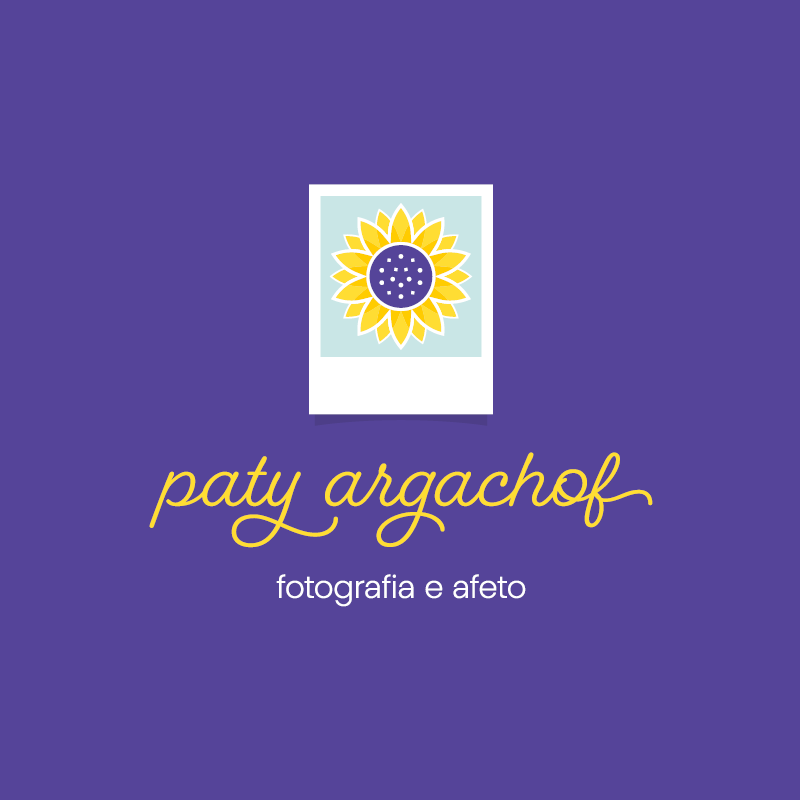// PT-BR
Morte. Palavra forte, não?
Ponto de divergência entre ciência e religião (e todas as religiões entre si), a existência dela é a única certeza que todos nós temos na vida, e este trabalho fala sobre ela. Não fala dela simplesmente como o fim da existência de um indivíduo, mas sim como uma etapa da vida.
Buscando uma interseção entre a religião e diferentes manifestações da arte em diversos períodos da história, criei uma animação bidimensional que discute a morte sob minhas crenças e o bom rock britânico.
Neste projeto você confere um pouco do processo do meu trabalho de conclusão de curso na minha graduação em Desenho Industrial na UNESP.
Caso queira ler sobre todo o processo, acesse o PDF do relatório aqui: Relatorio-TCC.pdf
//EN
Death. Strong word, isn't it?
A point of divergence between science and religion (and all religions among themselves), its existence is the only certainty we all have in life, and this work talks about it. It does not speak of it simply as the end of an individual's existence, but rather as a stage of life.
Seeking an intersection between religion and different manifestations of art in various periods of history, I created a two-dimensional animation that discusses death under my beliefs and a good British rock.
In this project you can see a little of my graduation work process in Design at UNESP.
If you want to read about the whole process, access the PDF of the report here: Relatorio-TCC.pdf
// PT-BR
Esta animação foi feita aliando 3 coisas aparentemente desconexas: o disco The Dark Side of The Moon, da genial banda britânica Pink Floyd; pinturas de natureza morta dos séculos XVI e XVII; e o livro do Eclesiastes, da Bíblia.
//EN
This animation was made by combining 3 seemingly disconnected things: the album The Dark Side of The Moon by the brilliant British band Pink Floyd; still life paintings from the 16th and 17th centuries; and the book of Ecclesiastes from the Bible.
// PT-BR
Você pode entender melhor a ligação entre essas coisas lendo o relatório completo, mas podemos resumir da seguinte maneira:
The Dark Side of The Moon é um álbum conceitual que explora a ideia da vida e do desconhecido. Começando com uma música que fala sobre o nascimento, o lado A do disco se desdobra em uma discussão (até certo ponto melancólica) sobre a vida, falando sobre trabalho, correria, tempo, cansaço, até chegar na última faixa antes de passar para o outro lado: o lado B, o lado desconhecido, o lado sombrio, o lado do qual não conhecemos bem. O lado A, então, termina com uma música chamada “The Great Gig in The Sky”, a grande celebração no céu. A música, sem letra - apenas com algumas gravações de entrevistas - fala sobre a morte, colocando a morte como a etapa para passar para o outro lado do disco - ou da vida. Curiosamente, ouvindo este disco genialmente sincronizado com o filme O Mágico de Oz de 1939 (conhecido como The Dark Side of The Rainbow), a leitura que se dá é que Dorothy não foi levada pelo furacão ao mundo de Oz, mas simplesmente morreu.
The Dark Side of The Moon é um álbum conceitual que explora a ideia da vida e do desconhecido. Começando com uma música que fala sobre o nascimento, o lado A do disco se desdobra em uma discussão (até certo ponto melancólica) sobre a vida, falando sobre trabalho, correria, tempo, cansaço, até chegar na última faixa antes de passar para o outro lado: o lado B, o lado desconhecido, o lado sombrio, o lado do qual não conhecemos bem. O lado A, então, termina com uma música chamada “The Great Gig in The Sky”, a grande celebração no céu. A música, sem letra - apenas com algumas gravações de entrevistas - fala sobre a morte, colocando a morte como a etapa para passar para o outro lado do disco - ou da vida. Curiosamente, ouvindo este disco genialmente sincronizado com o filme O Mágico de Oz de 1939 (conhecido como The Dark Side of The Rainbow), a leitura que se dá é que Dorothy não foi levada pelo furacão ao mundo de Oz, mas simplesmente morreu.
//EN
You can better understand the connection between these things by reading the full report, but we can summarize it as follows:
- The Dark Side of The Moon is a concept album that explores the idea of life and the unknown. Starting with a song about birth, the A-side of the album unfolds into a (maybe melancholic) discussion about life, talking about work, hurry, time, tiredness, until it reaches the last track before moving on to the other side: the B-side, the unknown side, the dark side, the side we don't really know. Side A then ends with a song called "The Great Gig in The Sky", the great celebration in the sky. The song, with no lyrics - just some interview recordings - talks about death, placing death as the step to go on to the other side of the record - or life. Interestingly, listening to this genially synchronized record with the 1939 film The Wizard of Oz (aka The Dark Side of The Rainbow), the reading one gets is that Dorothy was not taken by the hurricane to the world of Oz, but simply died.
- The Dark Side of The Moon is a concept album that explores the idea of life and the unknown. Starting with a song about birth, the A-side of the album unfolds into a (maybe melancholic) discussion about life, talking about work, hurry, time, tiredness, until it reaches the last track before moving on to the other side: the B-side, the unknown side, the dark side, the side we don't really know. Side A then ends with a song called "The Great Gig in The Sky", the great celebration in the sky. The song, with no lyrics - just some interview recordings - talks about death, placing death as the step to go on to the other side of the record - or life. Interestingly, listening to this genially synchronized record with the 1939 film The Wizard of Oz (aka The Dark Side of The Rainbow), the reading one gets is that Dorothy was not taken by the hurricane to the world of Oz, but simply died.
// PT-BR
- Seguindo a ideia de vida e morte, encontrei nas pinturas de natureza morta dos séculos XVI e XVII um conceito muito interessante: “Vanitas”. Traduzido como “vazio” ou “vaidade”, este conceito era muito presente nas obras de mesas postas ou caveiras, sempre como um lembrete de que o poder, a riqueza, o conhecimento, a alegria e tudo mais são passageiros, e fazer deles o foco da sua vida era viver uma vida vazia, uma vida de vaidade. O mais importante era saber aproveitar essas coisas sem perder de foco a eternidade, cuidando da alma e do relacionamento com Deus.
- Vaidade, vida vazia e reflexões sobre a importância com a alma são o tema central do livro do Eclesiastes, na Bíblia. De autoria comumente atribuída a Salomão, rei de Israel, este livro conta as reflexões de um velho sábio que, ao fim da vida, percebe que tudo que viveu era pura vaidade, e reconhece que o anseio pela eternidade, sempre presente no coração de todos os humanos, deve nos lembrar de que nossa vida por aqui é passageira, mas que a morte em si é apenas uma etapa para o outro lado da vida. Segundo o sábio, a eternidade com Deus deveria ser o foco de tudo que fazemos por aqui.
- Vaidade, vida vazia e reflexões sobre a importância com a alma são o tema central do livro do Eclesiastes, na Bíblia. De autoria comumente atribuída a Salomão, rei de Israel, este livro conta as reflexões de um velho sábio que, ao fim da vida, percebe que tudo que viveu era pura vaidade, e reconhece que o anseio pela eternidade, sempre presente no coração de todos os humanos, deve nos lembrar de que nossa vida por aqui é passageira, mas que a morte em si é apenas uma etapa para o outro lado da vida. Segundo o sábio, a eternidade com Deus deveria ser o foco de tudo que fazemos por aqui.
Busquei nessas três coisas as referências conceituais e visuais que guiariam todo o meu trabalho, e escolhi fazer uma animação utilizando integralmente a música The Great Gig in The Sky como base.
//EN
- Following the idea of life and death, I found in the still life paintings of the 16th and 17th centuries a very interesting concept: "Vanitas". Translated as "emptiness" or "vanity", this concept was very present in the works of set tables or skulls, always as a reminder that power, wealth, knowledge, joy and everything else are transient, and to make them the focus of your life was to live an empty life, a life of vanity. The most important thing was to know how to enjoy these things without losing focus on eternity, taking care of the soul and the relationship with God.
- Vanity, an empty life, and reflections on the importance of the soul are the central theme of the book of Ecclesiastes in the Bible. Commonly attributed to Solomon, king of Israel, this book tells the reflections of a wise old man who, at the end of his life, realizes that all he has lived was pure vanity, and recognizes that the longing for eternity, always present in the heart of all humans, should remind us that our life here is fleeting, but that death itself is only a stage to the other side of life. According to the sage, eternity with God should be the focus of everything we do here.
- Vanity, an empty life, and reflections on the importance of the soul are the central theme of the book of Ecclesiastes in the Bible. Commonly attributed to Solomon, king of Israel, this book tells the reflections of a wise old man who, at the end of his life, realizes that all he has lived was pure vanity, and recognizes that the longing for eternity, always present in the heart of all humans, should remind us that our life here is fleeting, but that death itself is only a stage to the other side of life. According to the sage, eternity with God should be the focus of everything we do here.
I found in these three things the conceptual and visual references that would guide all my work, and I chose to make an animation entirely using the song The Great Gig in The Sky as a framework.
// PT-BR
Iniciei fazendo um estudo minucioso da música, entendendo como a dinâmica dela se comportava e, a partir disso, criei um gráfico que me auxiliou no processo de roteirização da animação.
//EN
I started by making a detailed study of the music, understanding how its dynamics behaved and, from this, I created a graphic that helped me in the process of scripting the animation.
// PT-BR
Para criar as personagens e cenários, me baseei principalmente na minha própria avó e em sua casa.
Além de algumas outras referências encontradas na internet, utilizei também elementos da capa do disco The Final Cut, de Pink Floyd, para criar um pattern que serviria de papel de parede de um dos cenários.
Além de algumas outras referências encontradas na internet, utilizei também elementos da capa do disco The Final Cut, de Pink Floyd, para criar um pattern que serviria de papel de parede de um dos cenários.
//EN
To create the characters and scenarios, I based mainly on my own grandmother and her house.
Besides some other references found on the internet, I also used elements of the Pink Floyd album cover The Final Cut to create a pattern that would serve as wallpaper for one of the scenes.
Besides some other references found on the internet, I also used elements of the Pink Floyd album cover The Final Cut to create a pattern that would serve as wallpaper for one of the scenes.
// PT-BR
Depois de criar um animatic, finalizei as ilustrações e fiz toda a animação e pós-produção no Adobe After Effects.
//EN
After creating an animatic, I finished the illustrations and did all the animation and post-production in Adobe After Effects.


// PT-BR
Como concluí ao final deste projeto, entendi que toda etapa tem um fim - e que isso não é necessariamente ruim. Nos prendendo ao passado corremos o risco de vivermos vidas vazias, mas manter os olhos na eternidade nos enche de esperança e coragem para o agora e o além.
//EN
As I concluded at the end of this project, I realized that every stage has an end - and that is not necessarily a bad thing. By holding on to the past we risk living empty lives, but keeping our eyes on eternity fills us with hope and courage for the now and beyond.
Música por Pink Floyd
Orientação: Prof. Dr. Cláudio Roberto y Goya e Prof. Dr. João Eduardo Hidalgo
UNESP - Universidade Estadual Paulista “Júlio de Mesquita Filho“
FAAC - Faculdade de Arquitetura, Artes e Comunicação
Desenho Industrial - Programação Visual
FAAC - Faculdade de Arquitetura, Artes e Comunicação
Desenho Industrial - Programação Visual
Junho de 2011








